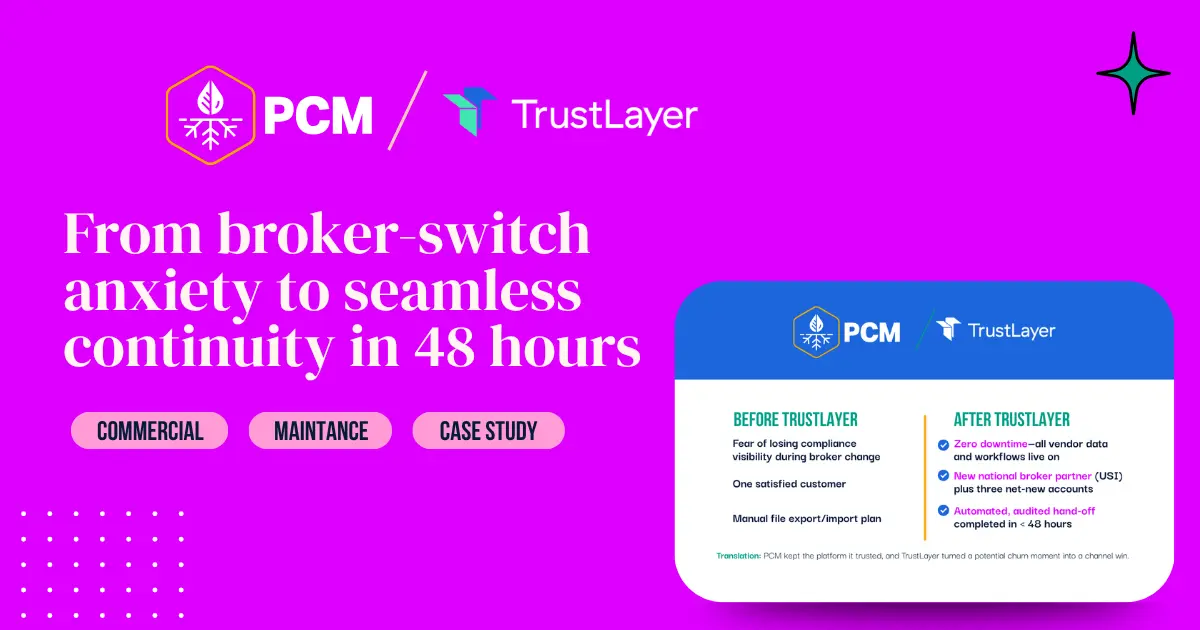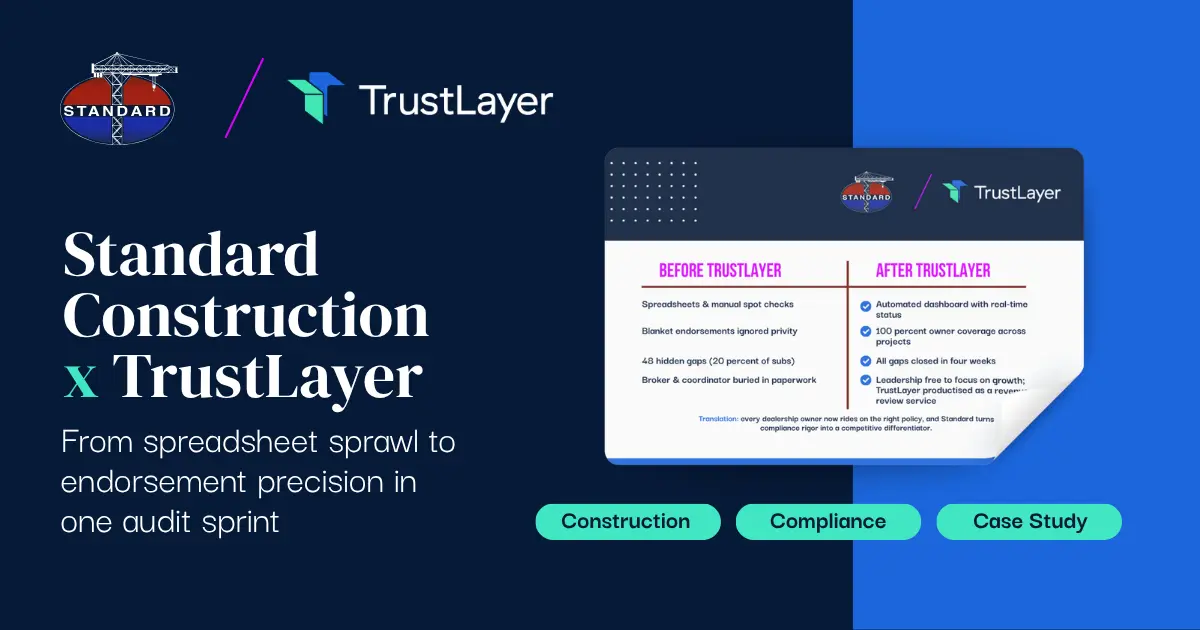Document Tracking Trends: What to Expect in 2024 and Beyond
In today's rapidly evolving digital landscape, the way we manage and track documents has become more critical than ever before. As we look toward the future, the role of document tracking will continue to shape how businesses operate and succeed. In this article, we will explore the trends and advancements that will shape document tracking in 2024 and beyond, and discuss how businesses can prepare for what lies ahead.
Understanding Document Tracking
Before delving into the exciting advancements in document tracking, let's first establish a foundation by understanding its basics. Document tracking refers to the process of monitoring and managing documents throughout their lifecycle. From creation to storage, retrieval, and even distribution, an effective document tracking system allows businesses to streamline workflows, increase productivity, and enhance security measures.
Document tracking is a multifaceted process that involves various components. One of the key aspects is assigning unique identifiers to each document, ensuring easy identification and retrieval. This can be achieved through different techniques such as barcode scanning, digital signatures, and metadata tagging. By implementing these techniques, document tracking systems not only enable efficient organization but also provide an audit trail, ensuring compliance and minimizing the risk of loss or unauthorized access.
The Basics of Document Tracking
The core principle behind document tracking lies in its ability to assign unique identifiers to each document, ensuring easy identification and retrieval. To achieve this, businesses employ various techniques, including barcode scanning, digital signatures, and metadata tagging. By implementing these techniques, document tracking systems not only enable efficient organization but also provide an audit trail, ensuring compliance and minimizing the risk of loss or unauthorized access.
Barcode scanning is a widely used method in document tracking. It involves the use of barcodes, which are unique patterns of parallel lines that represent data. These barcodes can be printed on physical documents or embedded in digital files. When scanned, the barcode is decoded, and the corresponding document is identified and tracked within the system. This method allows for quick and accurate document retrieval, reducing the time and effort required to locate specific files.
Digital signatures are another important aspect of document tracking. They provide a secure and tamper-proof way of verifying the authenticity and integrity of a document. Digital signatures use cryptographic algorithms to create a unique digital fingerprint of the document. This fingerprint is then encrypted and attached to the document, ensuring that any changes made to the file can be detected. By incorporating digital signatures into document tracking systems, businesses can ensure the integrity of their documents and protect against forgery or unauthorized modifications.
Metadata tagging is a technique that involves adding descriptive information to documents. This information, known as metadata, includes details such as the document's title, author, creation date, and keywords. By tagging documents with relevant metadata, businesses can categorize and organize their files more effectively. This allows for easier searching and retrieval of documents based on specific criteria, such as keywords or document type. Metadata tagging enhances the efficiency of document tracking systems by enabling users to quickly locate the information they need.
The Importance of Document Tracking in Business
Document tracking plays a vital role in every business, regardless of size or industry. By effectively tracking and managing documents, businesses can reduce errors, improve collaboration, and enhance customer satisfaction. According to a recent survey by Deloitte, companies that invest in robust document tracking systems experience a 30% reduction in operational costs and a 20% increase in overall productivity.
One of the primary benefits of document tracking is the reduction of errors. With a well-implemented tracking system, businesses can minimize the risk of misplacing or losing important documents. This ensures that critical information is always accessible when needed, preventing costly mistakes and delays. Additionally, document tracking promotes accountability within an organization by providing an audit trail of document activities. This allows businesses to identify and address any issues or discrepancies that may arise during the document lifecycle.
Improved collaboration is another advantage of document tracking. By implementing a centralized document tracking system, businesses can facilitate seamless collaboration among team members. Documents can be easily shared, reviewed, and edited, ensuring that everyone has access to the most up-to-date information. This promotes efficient teamwork and eliminates the need for multiple versions of the same document, reducing confusion and enhancing productivity.
Customer satisfaction is also greatly influenced by effective document tracking. When businesses can quickly and accurately retrieve customer-related documents, they can provide prompt and personalized service. Whether it's retrieving a customer's purchase history or resolving an issue, having access to the necessary documents in a timely manner can significantly improve the customer experience. Document tracking systems enable businesses to deliver efficient and reliable service, leading to increased customer satisfaction and loyalty.
In conclusion, document tracking is a crucial process that enables businesses to efficiently manage their documents throughout their lifecycle. By employing various techniques such as barcode scanning, digital signatures, and metadata tagging, businesses can streamline workflows, enhance security measures, and improve overall productivity. The benefits of document tracking extend beyond operational efficiency, as it also reduces errors, promotes collaboration, and enhances customer satisfaction. Investing in a robust document tracking system is a wise decision for any business looking to optimize their document management processes.
The Evolution of Document Tracking
Over the years, document tracking has undergone a significant transformation, transitioning from traditional paper-based processes to advanced digital solutions. This shift has revolutionized the way businesses operate and has paved the way for exciting innovations in the field.
From Paper to Digital: A Brief History
It wasn't long ago when businesses relied heavily on physical documents stored in filing cabinets, making it cumbersome to locate and track essential information efficiently. The advent of digital technologies revolutionized this process. Today, businesses leverage document tracking software and cloud-based storage systems, enabling seamless access to documents from anywhere at any time. This digital transformation has significantly enhanced collaboration, productivity, and data security.
With the transition from paper to digital, businesses have experienced a multitude of benefits. Gone are the days of sifting through stacks of paperwork, wasting valuable time and resources. Now, employees can simply search for specific keywords or phrases within documents, instantly retrieving the information they need. This newfound efficiency has streamlined workflows and improved overall productivity.
Furthermore, the integration of cloud-based storage systems has eliminated the need for physical storage space. Businesses no longer have to allocate valuable office real estate to house filing cabinets filled with documents. Instead, they can store an unlimited number of files securely in the cloud, accessible to authorized personnel at any time. This not only saves money but also reduces the environmental impact associated with excessive paper usage.
Recent Innovations in Document Tracking
While the shift from paper to digital was undoubtedly groundbreaking, recent innovations have further accelerated the evolution of document tracking. One of the most notable advancements is the integration of artificial intelligence (AI) and machine learning algorithms, providing businesses with intelligent document processing capabilities. AI-powered document tracking systems can automatically classify and extract data from documents, accelerating workflows and reducing the margin for human error.
Imagine a scenario where a company receives hundreds of invoices daily. Traditionally, employees would have to manually review each invoice, input the relevant data into their systems, and ensure accuracy. This process was not only time-consuming but also prone to human error. However, with AI-powered document tracking, the system can automatically scan and extract the necessary information from the invoices, eliminating the need for manual data entry. This not only saves time but also reduces the risk of costly mistakes.
Furthermore, AI algorithms can learn from patterns and make intelligent decisions based on historical data. For example, if a document tracking system notices a recurring error in a specific type of document, it can flag it for review, preventing the same mistake from happening repeatedly. This level of automation and intelligence has revolutionized document tracking, making it more efficient, accurate, and reliable than ever before.
In addition to AI, other innovations in document tracking include advanced optical character recognition (OCR) technology, which enables the system to accurately convert scanned documents into editable text. This feature is particularly useful when dealing with handwritten documents or documents with complex formatting. OCR technology ensures that no information is lost during the digitization process, preserving the integrity of the original document.
Moreover, document tracking systems now offer robust security features to protect sensitive information. Encryption, access controls, and audit trails are just a few examples of the security measures implemented to safeguard documents from unauthorized access or tampering. These features provide businesses with peace of mind, knowing that their confidential data is protected at all times.
In conclusion, the evolution of document tracking from paper-based processes to advanced digital solutions has transformed the way businesses operate. With the integration of AI, machine learning, OCR technology, and enhanced security measures, document tracking has become more efficient, accurate, and secure than ever before. As technology continues to advance, we can expect further innovations in this field, driving businesses towards even greater productivity and success.
Anticipating the Future: Document Tracking in 2024
As we peer into the future, it becomes evident that document tracking will continue to witness remarkable advancements. Let's explore some of the predicted trends that will shape the document tracking landscape in 2024 and beyond.
Predicted Technological Advancements
In the coming years, emerging technologies such as blockchain and the Internet of Things (IoT) will revolutionize document tracking. The decentralized nature of blockchain ensures immutable records, making it an ideal solution for securing critical documents. Additionally, IoT devices, equipped with sensors and connectivity, will enable real-time monitoring of document movement and provide valuable insights into usage patterns and process optimization.
Impact on Various Industries
The impact of advanced document tracking systems will be felt across industries. For instance, in the insurance sector, where certificates of insurance play a pivotal role, efficient document tracking systems will streamline the issuance and verification processes, reducing administrative burdens and minimizing the risk of non-compliance. TrustLayer, a leading provider in the insurance industry, offers an innovative platform that allows businesses to streamline their certificate of insurance management, ensuring compliance and strengthening trust between parties.
Beyond 2024: Long-Term Predictions for Document Tracking
Looking beyond 2024, it is clear that document tracking will continue to evolve, presenting both new opportunities and challenges for businesses. Let's explore some of the long-term predictions for document tracking and the strategies to navigate them successfully.
Potential Challenges and Solutions
While advancements in document tracking offer immense benefits, they also bring challenges such as data privacy and cybersecurity risks. As document tracking systems become more interconnected and reliant on cloud infrastructure, businesses must prioritize robust security measures and regularly update their protocols to safeguard sensitive information. Additionally, partnerships with trusted providers like TrustLayer can ensure that businesses have access to the most secure and efficient document tracking solutions available.
The Role of AI and Machine Learning in Document Tracking
In the long run, AI and machine learning will continue to transform document tracking. With advancements in natural language processing and computer vision, these technologies will enable document tracking systems to analyze, interpret, and extract critical insights from unstructured data. As businesses strive for increased efficiency and data-driven decision-making, AI-powered document tracking systems will become invaluable assets.
Preparing for the Future of Document Tracking
As organizations adapt to the constant evolution of document tracking, it is imperative to identify the necessary skills and strategic planning needed to stay ahead.
Necessary Skills and Training
Proficiency in emerging technologies, particularly AI and data analytics, will be a valuable asset for individuals involved in document tracking. By investing in continuous learning and upskilling programs, businesses can ensure that their workforce remains equipped to handle the challenges and leverage the opportunities presented by evolving document tracking systems.
Strategic Planning for Businesses
Businesses that hope to thrive in the future must embrace strategic planning. By evaluating their current document tracking processes and anticipating future needs, businesses can make informed decisions regarding technology adoption and process optimization. Collaboration with industry leaders like TrustLayer can provide valuable insights and guidance to ensure businesses implement the most effective and innovative document tracking solutions.
In conclusion, the future of document tracking holds immense possibilities for businesses across industries. By understanding the basics, embracing emerging technologies, and partnering with trusted providers, businesses can adapt and thrive in this ever-evolving landscape. As we look toward 2024 and beyond, it is crucial to stay proactive, continuously learn, and leverage the power of document tracking to stay one step ahead in an increasingly digital world.
















